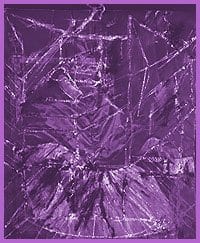Francis Bacon has long been considered one of the most important painters of the 20th century.
So it should come as no surprise that when the National Gallery Of Canada was offered a stack of potential source material related to one of the legendary queer artist’s paintings in its permanent collection, the gallery jumped at the chance to further the study of Bacon’s work.
The material, which consists of some half dozen individual documents, will become part of the National Gallery’s Library And Archives collection, where it will be available for study by scholars.
The small collection was donated in late August by Barry Joule, a Canadian who was the painter’s friend and neighbor during the last 14 years of his life.
The documents appear to be directly related to Bacon’s Study For Portrait No 1, an oil painting of a pope owned by the National Gallery Of Canada (purchased from Bacon’s gallery in London in 1957 by then-gallery director Allan Jarvis, who was also gay). Included is a heavily worked-over image of Diego Velasquez’s 1650 Portrait Of Innocent X, which inspired Bacon’s famous series of pope portraits.
Currently, the National Gallery is presenting an exhibition of two of the donated items, along with Bacon’s painting Study For Portrait No 1, a film entitled The Other Francis Bacon (1999) and a suite of photographs by Montreal artist Sorel Cohen inspired by Bacon.
The exhibition will continue to be shown at the National Gallery, in room C215a of the museum’s European wing, until Oct 24.
Bacon, born in Ireland in 1909 to English parents, spent much of his youth traveling back and forth between Dublin and London.
After his homosexuality was discovered by his family in 1925, Bacon left home and spent time in Berlin and Paris, before ultimately returning to London to begin his work as an interior designer.
Inspired by an exhibition of works by Pablo Picasso – an influence on much of Bacon’s art, along with the work of Velazquez and the Surrealist movement – the largely self-taught artist began to paint. He achieved his first major critical success with his painting Three Studies For Figures At The Base Of A Crucifixion in 1944.
Joule donated most of his collection of Bacon-related source material, sketches and photographs to the Tate Gallery in London last fall, and he recently gave a second group of items related to Pablo Picasso to the Musée Picasso in Paris.
But some art historians and critics – and even Bacon’s estate – have raised doubts regarding the authenticity of much of Joule’s collection.
Joule, however, has maintained the legitimacy of the material, which he says Bacon gave to him for safe-keeping before the artist left for Spain, three days before his death in April, 1992.
“The main part of the struggle is that he said all of his life that he didn’t draw and that he didn’t prepare,” Joule says of Bacon. “I had difficulties with the estate, perhaps because if the material is authenticated, and I sold it, suddenly you’d have a lot of Francis Bacons on the market, which could affect the value of the final paintings, which are very, very expensive.”
Diana Nemiroff, curator of Modern Art at the National Gallery and organizer of the exhibition, adds that the material donated by Joule to the gallery “merits further research” and could be used as “a tool to help us understand the creative process of this artist who in many ways remains enigmatic since his death.
“It will take many hours of scholarly research to unravel the exact role the material found in the studio played in the conception and execution of [Bacon’s] finished paintings,” she says.
In the meantime, although the debate over the legitimacy of Joule’s collection may continue, Bacon’s status as a 20th-century master and a visionary queer artist is unquestioned.
“And I think that’s because of the mystery of his work, the mystery of the man and the greatness of his work,” Joule says. “I think that his art just stays up there with the great artists of the 20th century – or even the great masters – it’s work that endures, it has a resonance for people and they are curious.”
FRANCIS BACON.
Until Oct 24.
10am5pm, WedSun. 10am8pm, Thu. Closed MonTue.
Room C215a, European wing.
National Gallery Of Canada (380 Sussex Dr).
Included in general admission to gallery; $6/adults, under 12 free.

 Why you can trust Xtra
Why you can trust Xtra


